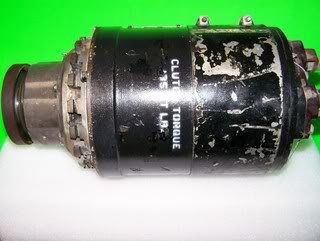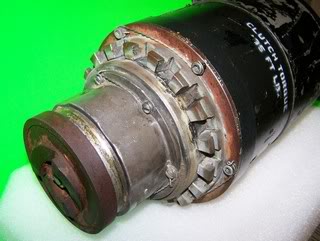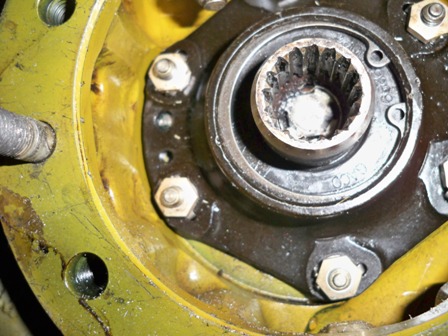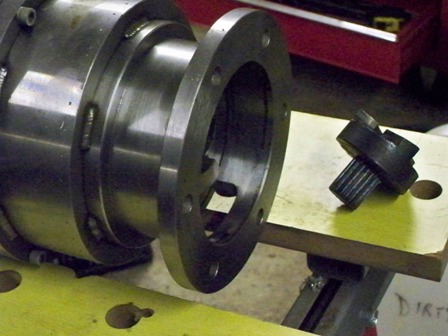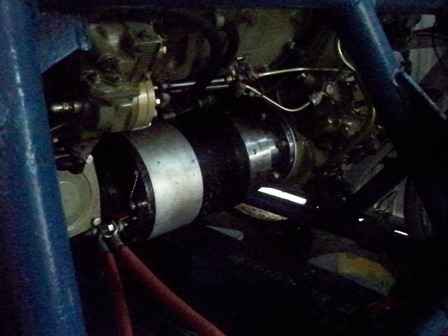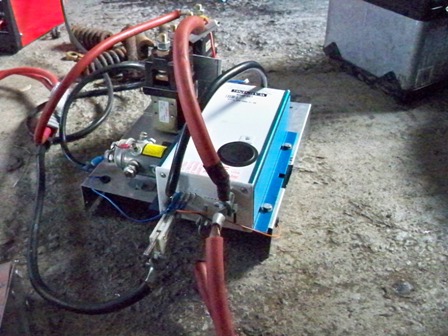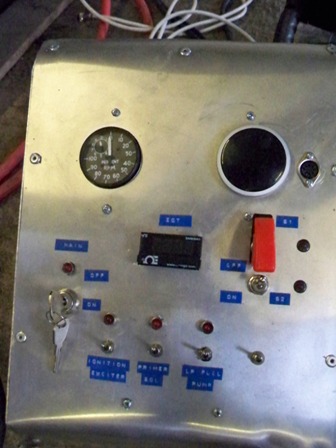PROJECT VIPER 535 – SEPTEMBER 2009
Well, after much testing and head scratching I’ve come to the conclusion that the Nimbus is not that powerful as a turbojet, certainly not sufficient to push a Landrover along. What we need is something a little bigger. After scouring the ends of the earth I managed to find the perfect solution – a Rolls Royce Viper 535 turbojet engine. The Viper I have found is in quite good condition, although there is slight superficial corrosion on the exhaust and forward compressor blades. It was built in 1978 and was used in a Strikemaster jet (below). This is the military version of the Jet Provost. From the log-book it was used in the Middle East possibly Yemen or Oman.
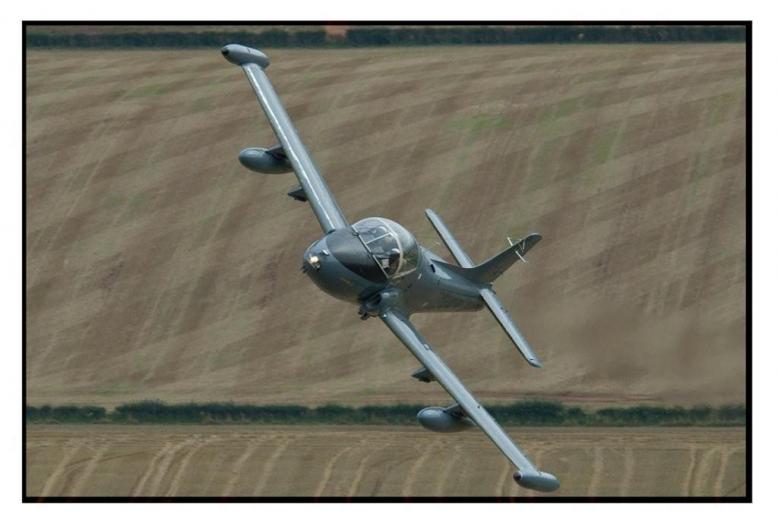
Here’s the Viper on the test stand as we start work on getting her operational.
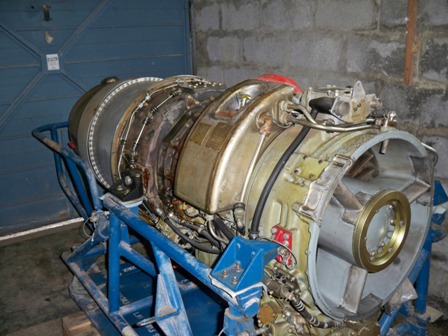
Below you can see the exhaust and the turbine rotor disc.
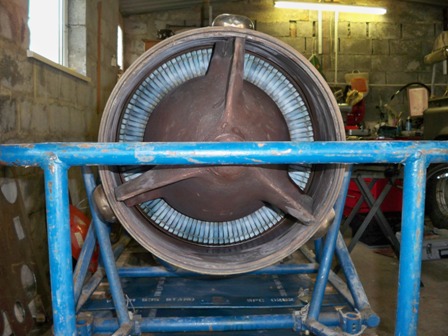
Interesting facts and figures regarding the Viper 535:
Type…….. Turbo-jet
Arrangement……..Axial Flow
Compressor……..Eight Stage Axial
Combustor……..Annular Vaporising Burners
Thrust (approx)……..3,450 lbs
Weight………..350kg
Before I can get the engine running I will need a starter motor, a motor control unit, an ignition excitor system and a control box.
MARCH 2010
Well it’s been a long time since I updated the Viper 535 pages. The project has hit a stumbling block…..the starter motor. My initial plan was to try and adapt a starter motor from a Viper 200 series to work on this engine. The main problem was that this motor is designed to fit on the front end of the engine and not onto a gearbox and therfore turns in the wrong direction. Despite this I successfully re-wired the motor to turn anti-clockwise and rigged up a suitable soft-start relay box and an adapter shaft. Problem……the motor does not spin the engine up fast enough and uses excessive amounts of current such that the brushes and commutator are overheating and melting. The other mistake contributing to the problem was that I removed the epicyclic gears from the motor to fit the new shaft.This causes to much resistance for the motor.Furthermore, reversing the direction of turn on a series wound motor invariably results in a drop in speed/performance. You live and learn. Back to the drawing board. Trying to find the original starter-generator at an affordable price has proved nigh-on impossible so plan B is to find a suitable starter motor thats turns in the correct direction and try again.Watch this space.
NOVEMBER 2010
I think that I may have finally cracked the starter motor problem I have had with the Viper. Sometimes patience pays off…..after a few months following my disastrous experiments with the old motor I found a large jet engine starter off E-bay that appaeared to be big enough and turned in the right direction. Iam not sure what engine it originally came from, probably a US military jet of some sort.
You can see the original motor as received. It is designed to lock into the gearbox of the engine with the castlleated flange and then secured with a v-clamp.
The motor has a clutch so therefore we will need to make up a dog drive shaft for this to bite onto (excuse the pun!). Below you can see the starter -generator mounting on the Viper’s accessory gearbox. It’s going to take a major bit of re-engineering to get this starter-motor to fit onto the original stud bolts.
I decided to take the motor to Andrew at Cross Engineering in Swansea to see what he could come up with. After a bit of head scratching Andrew and the boys came up with this modification to the end of the motor and constructed a neat little dog drive to fit into the splined shaft of the gearbox- fantastic job!
It’s amazing that the modified motor just fits into the space between the gearbox and the fuel filter. Here’s the starter motor bolted onto the gearbox ready to run.
Having mounted up the starter motor the next challenge was the soft-start system…..this motor is designed to use 28v and is rated up to 1000 amps. I didn’t realise at the time that the torque generated by this is colossal. The plan was to use a conventional series resistor as a soft-start then apply full power once the engine achieved about 5% rpm. Even with this arrangement the motor still managed to break the dog-drive shaft, bugger!!
After a quick weld fix to the shaft everything is back in place for plan B. In order to reduce the stresses on the drive transmission and to prevent anymore broken shafts I have decided to try a PWM motor controller as my soft-start system.
Here’s an Alltrax 650 Amp motor controller that I have found. Using this device I’ll be able to control the motor speed exactly from rest. I’m using 36v into the controller to allow the starter to achieve a good speed.
The controller works really well in this configuration; I can spin the engine up to 12% rpm which should be sufficient to achieve ignition. The motor hardly breaks a sweat and there are no hot cables like my previous experiences. All we have to do now is to get the engine ready for an attempt at starting!!
I built the control box for this engine some months ago and have adapted it to use with the Walter M701. The basic instrumentation includes a percent RPM gauge, an oil pressure gauge measuring up to 100 psi and a Newport digital thermocouple meter for the EGT. The oil pressure sender on the engine has been replaced with a standard electric car sender to simplify the wiring. We also have switches for the ignition exciter, primer solenoid and LP fuel pump.
DECEMBER 2010
Today was the big day that I finally broke the curse of my Viper and finally started it up for the first time! I have to say that the starter motor and PWM controller worked flawlessly. The first run was a bit scarey as the engine tends to accelerate up to its idle speed fairly quickly; I wasn’t sure if it was going into an overspeed so I shut it down prematurely by closing the HP shut off valve. The second run was almost perfect and boy what a noise! you can really feel the power of this engine.
Here’s the Youtube link to a video of the third run-up:
http://www.youtube.com/watch?v=2ZIXNmZ3j1g
This video shows a walk around of the engine up close:
